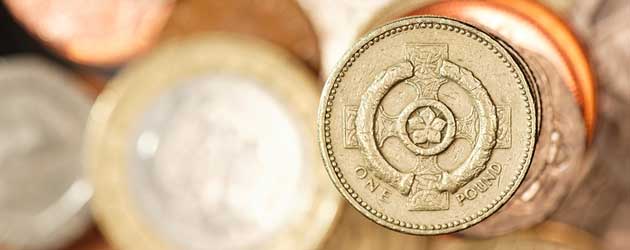
The Pound to Euro exchange rate (GBP/EUR) jumped higher by around 0.6 cents yesterday, reaching a daily high of 1.1747, as Manufacturing PMI data from around the world printed disappointingly. Chinese, German, Eurozone, and US PMI results all came in weaker-than-anticipated, which dampened global risk sentiment.
China struck first, with a disappointing Manufacturing PMI figure of 50.5 for April – far lower than March’s 51.6, or the market consensus of 51.5. The softer-than-anticipated report is the first economic indicator for Chinese performance in the second quarter, and bodes badly for the world’s second largest economy. Risky assets such as the Australian Dollar and the New Zealand Dollar declined in reaction to the figure.
Alluding to the first quarter GDP print, which fell below analysts’ expectations of 8.0% to 7.7%, Bank of Communication International Securities Strategist Hong Hao said: “Today’s data is a confirmation of a weak trend”.
The downbeat dataset continued in Europe, where German PMI’s for Manufacturing and Services sunk to far worse levels than had been predicted. The Manufacturing PMI shrunk to 47.9, compared to forecasts of 49.0, and the Services score fell below the 50.0 level that separates growth from contraction to 49.2. Subsequently the Eurozone Composite PMI remained in extremely dire straits at 46.5.
Comments earlier in the week from Bundesbank President and ECB Board Member Jens Weidmann, suggesting that a low PMI score could lead to an interest rate cut from the European Central Bank, meant that the Euro was subject to some selling pressure when the soft figures were announced. The Pound to Euro exchange rate (GBP/EUR) shot down by -0.6 cents immediately and the single currency also ceded -0.75 cents to the US Dollar, falling below 1.3000 (EUR/USD) for the first time in nearly two weeks.
Boris Schlossberg of BK Asset Management said:
“Given the deteriorating fundamentals in the Eurozone, the prospect (of an ECB rate cut) has certainly increased. A rate cut would be the quickest and least expensive policy choice.”
The Eurozone is Britain’s closest trading partner, and due to the UK’s severe vulnerability to weaknesses in the 17-nation bloc, Sterling also found itself depreciating against the US Dollar in response to the underwhelming German/Eurozone figures. GBP/USD plummeted -0.65 cents in the immediate aftermath of the release, falling below 1.5200 for the first time since the beginning of April.
However, it was the US Dollar’s turn to tumble next, as the US Preliminary PMI for April performed worse-than-anticipated, printing at 52.0 instead of 53.5. The result marked the lowest score for six months as the recent spending cuts and tax hikes continued to compromise economic confidence in the region: domestic demand was cited as the primary source of weakness.
Chris Williamson of Markit Economics, who compiled the report, said:
“While this week’s first quarter GDP numbers may… bring some brighter news on the economy, the picture looks to have already begun to darken again, with GDP growth set to weaken in the second quarter”.
The Pound regained some composure, and rallied by around 0.2 cents to 1.5280 (GBP/USD) in response to the data. With the world’s largest economy starting to feel the adverse effects of the ‘fiscal cliff’ and the ‘sequestration’, it appears fairly unlikely that the Federal Reserve will seek to downsize its QE3 programme anytime soon.
Today’s most notable release is forecast to show US Durable Goods Orders fall from 5.7% to -2.8%. If the predictions prove accurate then we could see Sterling start to push ahead further against the US Dollar. However, it is unlikely that the Pound will be allowed to fully stretch its wings until the UK first quarter GDP figure is released on Thursday.

Comments are closed.